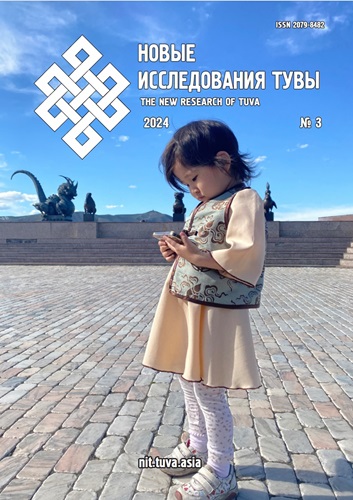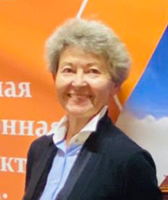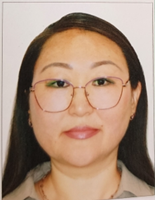Internet-dependent behavior as a potential risk factor for recurrent headaches among adolescents and young adults of the Republic of Tuva
DOI:
https://doi.org/10.25178/nit.2024.3.2Keywords:
teenager; youth; Tuva; recurrent headache; risk factor; Internet; online behavior; addiction; consumed content; Tuvans; RussiansAbstract
The article is devoted to the study of the prevalence and structure of recurrent headache (RH), one of the most common types of functional somatic disorders, among adolescents residing in the Republic of Tuva. It also assesses the role of maladaptive online behavior and certain components of Internet content as possible risk factors for RH among adolescents and young people in Tuva. The authors analyzed the significance of different types of Internet use among Tuvan adolescents and young adults, including adaptive (AIU), maladaptive (MIU), pathological (PIU) and mixed forms, as well as specific forms such as problematic use of computer games and social networks.
The source of the analysis was the results from online testing of a random sample of adolescents (2,772 individuals) using Google Forms and psychometric questionnaires. We used screening questionnaires to verify the types of online behavior and the components of internet content. The significance of the indicators as possible risk factors for PH was assessed using odds ratios and their confidence intervals.
A large list of risk factors for developing RH due to maladaptive online behavior has been identified. These factors include the gender, age group, and ethnicity of those surveyed. The most significant risk factors for girls are problematic internet use (PIU) and maladaptive internet use (MIU), while for boys, problematic smartphone use is the most significant factor. For the age group 12–14, the most important risk factors are MIU, problematic internet use, dependence on social networks, and an undifferentiated type of problematic internet use. For those aged 15–18, the risk factors include problematic internet and social network use, as well as problematic smartphone use and a mixed type of problematic internet usage.
Significant risk factors for Tuvans surveyed (regardless of age and gender) included problematic smartphone use and problematic use of PIU. For Russians, it was problematic computer game use.
The likelihood of developing RH among adolescents and young people in Tuva (if risk is assessed for the entire surveyed group, regardless of age, gender, and ethnicity) depends on their online behavior, including problematic smartphone and social network use.
References
Alidzhanova, D. A., Madzhidova, E. N. and Nurmukhamedova, M. A. (2017) The pathogenetic mechanisms of tension-type headaches in children and principles of its prevention. Sibirskoe meditsinskoe obozrenie, no. 1, pp. 5–10. (In Russ.).
Egorov, A. Yu. (2015) Modern views on Internet addiction and approaches to its correction. Meditsinskaia psikhologiia v Rossii, vol. 33, no. 4, article 4. [online] Available at: http://mprj.ru/archiv_global/2015_4_33/nomer01.php (access date: 18.02.2024). (In Russ.).
Esin, O. R. (2023) Modern principles of primary headaches prevention in children and adolescents. S. S. Korsakov Journal of Neurology and Psychiatry, vol. 123, no. 5, pp. 31–37. (In Russ.). DOI: https://doi.org/10.17116/jnevro202312305131
Kekeeva, Z. O., Uvarova, G. N., Darzhinova, S. V., Mueva, A. V. and Oorzhak, A. B. (2022) Research on the network identity of the student youth of Russian regions (the cases of Kalmykia and Tuva). New Research of Tuva, no. 4, pp. 169–179. (In Russ.). DOI: https://doi.org/10.25178/nit.2022.4.13
Kotova, O. V., Beliaev, A. A. and Akarachkova, E. S. (2020) Tension headache: clinic, diagnosis, treatment. Consilium Medicum, vol. 22, no. 9, pp. 68–70. (In Russ.). DOI: https://doi.org/10.26442/20751753.2020.9.200458
Lamazhaa, Ch. K. (2021) Social Culture of Tuvans and Online Space. New Research of Tuva, no. 2, pp. 115–129. (In Russ.). DOI: https://doi.org/10.25178/nit.2021.2.10
Osipova, V. V. (2018) Primary headaches in the practice of a neurologist and therapist. Moscow, GEOTAR-Media. 104 p. (In Russ.).
Rebrova, O. Iu. (2002) Statistical analysis of medical data. Application of the STATISTICA application software package. Moscow, Media Sfera. 305 p. (In Russ.).
Tabeeva, G. R. and Fokina, N. M. (2016) Possibilities of preventive therapy in frequent episodic tension-type headache. S. S. Korsakov Journal of Neurology and Psychiatry, vol. 116, no. 1, pp. 34–39. (In Russ.). DOI: https://doi.org/10.17116/jnevro20161161134-39
Shnaider, N. A., Kondrat'ev, A. V. and Shul'min, A. V. (2015) Epidemiology of headaches. Sovremennye problemy nauki i obrazovaniia, no. 6 [online] Available at: https://science-education.ru/ru/article/view?id=22811 (access date: 15.03.2024). (In Russ.).
Chutko, L. S., Kornishina, T. A., Surushkina, S. Iu., Iakovenko, E. A., Anisimova, T. I. and Volov, M. B. (2018) Syndrome of autonomic dysfunction in children and adolescents. S. S. Korsakov Journal of Neurology and Psychiatry, vol. 118, no. 1, pp. 43–49. (In Russ.). DOI: https://doi.org/10.17116/jnevro20181181143-49
Evert, L. S., Potupchik, T. V., Reusheva, S. V., Zaitseva, O. I. and Panicheva, E. S. (2016a) Ethnicity, age, and gender in Siberian schoolchildren with recurrent pain syndromes. Profilakticheskaia meditsina, vol. 19, no. 4, pp. 28–32. (In Russ.). DOI: https://doi.org/10.17116/profmed201619428-32
Evert, L. S., Reusheva, S. V., Zaitseva, O. I., Panicheva, E. S. and Potupchik, T. V. (2016b) Etiopathogenetical aspects and risk factors for in children and adolescents. Rossiiskii pediatricheskii zhurnal, vol. 19, no. 6, pp. 380–384. (In Russ.).
Evert, L. S., Seren-ool, S. S. and Sat, D. A. (2023) Teenagers of Kyzyl (Republic of Tuva) in the online space. New Research of Tuva, no. 4, pp. 237–254. (In Russ.). DOI: https://doi.org/10.25178/nit.2023.4.17
Al-Hashel, J. Y., Ahmed, S. F. and Alroughani, R. (2017) Prevalence of primary headache disorders in Kuwait. Neuroepidemiology, vol. 48, pp. 138–46. DOI: https://doi.org/10.1159/000478892
Blume, H. K. (2017) Childhood headache: a brief review. Pediatric Annals, vol. 46, no. 4, article e155–e165. DOI: https://doi.org/10.3928/19382359-20170321-02
Çaksen, H. (2021) Electronic Screen Exposure and Headache in Children. Annals of Indian Academy of Neurology, vol. 24, no. 1, pp. 8–10. DOI: https://doi.org/10.4103/aian.AIAN_972_20
Cao, Hui, Ying, Sun, Yuhui, Wan, Jiahu, Hao and Fangbiao, Tao (2011) Problematic Internet use in Chinese adolescents and its relation to psychosomatic symptoms and life satisfaction. BMC Public Health Volume, article 802. DOI: https://doi.org/10.1186/1471-2458-11-802
Chen, S.-H., Weng, L.-J., Su, Y.-J., Wu, H.-M. and Yang, P.-F. (2003) Development of a Chinese Internet Addiction Scale and Its Psychometric Study. Chinese Journal of Psychology, vol. 45, no. 3, pp. 279–294. DOI: https://doi.org/10.1037/t44491-000
Durkee, T., Carli, V., Floderus, B., Wasserman, C., Sarchiapone, M. and Apter, A. (2016) Pathological Internet use and risk-behaviours among European adolescents. International Journal of Environmental Research and Public Health, vol. 13, no. 3, article 294. DOI: https://doi.org/10.3390/ijerph13030294
Feng, W., Ramo, D., Chan, S. R. and Bourgeois, J. (2017) Internet gaming disorder: Trends in prevalence 1998–2016. Addictive Behaviors, vol. 75, pp. 17–24. DOI: https://doi.org/10.1016/j.addbeh.2017.06.010
Friedrichsdorf, S. J., Giordano, J., Dakoji, K. D., Warmuth, A., Daughtry, C. and Schulz, C. A. (2016) Chronic Pain in Children and Adolescents: Diagnosis and Treatment of Primary Pain Disorders in Head, Abdomen, Muscles and Joints (Review). Children, vol. 3, article 42. DOI: https://doi.org/10.3390/children3040042
Hinton, D. and Kirk, S. (2016) Families' and healthcare professionals' perceptions of healthcare services for children and young people with medically unexplained symptoms: a narrative review of the literature. Health Social Care Community, vol. 24, no. 1, pp. 12–26. DOI: https://doi.org/10.1111/hsc.12184
Izmaĭlova, I. G, Belopasov, V. V, Korol'kova, V. S. and Shvarts, M. N. (2011) Headache in the population of schoolchildren: prevalence, pattern, risk factors. Hygiene and Sanitation, no. 6, pp. 44–47. (In. Russ.). PMID: 22250391
Kumar, R. (2014) Internet addiction and psychosomatic symptoms among engineering students. Indian Journal of Psychiatry, vol. 17, no. 2, pp. 387–394.
Kwon, M., Kim, D. J., Cho, H. and Yang, S. (2013) The smartphone addiction scale: development and validation of a short version for adolescents. PLoS One, vol. 8, article e83558. DOI: https://doi.org/10.1371/journal.pone.0083558
Lemmens, J. S., Valkenburg, P. M. and Peter, J. (2009) Development and validation of a Game Addiction Scale for Adolescents. Journal of Media Psychology, vol. 12, no. 1, pp. 77–95. DOI: https://doi.org/10.1080/15213260802669458
Malas, N., Ortiz-Aguayo, R., Giles, L. and Ibeziako, P. (2017) Pediatric Somatic Symptom Disorders. Current Psychiatry Report, vol. 19, no. 2, article 11. DOI: https://doi.org/10.1007/s11920-017-0760-3
Milde-Busch, A., von Kries, R., Thomas, S., Heinrich, S., Straube, A. and Radon, K. (2010) The association between use of electronic media and prevalence of headache in adolescents: results from a population-based cross-sectional study. BMC Neurology, vol. 9, no. 10, article 12. DOI: https://doi.org/10.1186/1471-2377-10-12
Mohapatra, S., Deo, S. J. K., Satapathy, A. and Rath, N. (2014) Somatoform disorders in children and adolescents. Psychiatry, vol. 17, no. 1, pp 19–24.
Montagni, I., Guichard, E., Carpenet, C., Tzourio, C. and Kurth, T. (2016) Screen time exposure and reporting of headaches in young adults: A cross-sectional study. Cephalalgia, vol. 36, no. 11, pp. 1020–1027. DOI: https://doi.org/10.1177/0333102415620286
van den Eijnden, R. J. J. M., Lemmens, J. S. and Valkenburg, P. M. (2016). The Social Media Disorder Scale. Computers in Human Behavior, vol. 61, pp. 478–487. DOI: https://doi.org/10.1016/j.chb.2016.03.038
Wober, C., Wober-Bingol, C., Uluduz, D., Aslan, T. S., Uygunoglu, U., Tüfekçi, A., Alp, S. I., Duman, T., Sürgün, F., Emir, G. K., Demir, C. F., Balgetir, F., Özdemir, Y. B., Auer, T., Siva, A. and Steiner, T. J. (2018) Undifferentiated headache: broadening the approach to headache in children and adolescents, with supporting evidence from a nationwide school-based cross-sectional survey in Turkey. The Journal of Headache and Pain, vol. 19, no. 1, pp. 18. DOI: https://doi.org/10.1186/s10194-018-0847-1
Xavier, M. K., Pitangui, A. C., Silva, G. R., Oliveira, V. M., Beltrão, N. B. and Araújo, R. C. (2015) Prevalence of headache in adolescents and association with use of computer and videogames. Cien Saude Colet, vol. 20, no. 11, pp. 3477–3486. DOI: https://doi.org/10.1590/1413-812320152011.19272014
Zivadinov, R., Willheim, K., Sepic-Grahovac, D., Jurjevic, A., Bucuk, M., Brnabic-Razmilic, O., Relja, G. and Zorzon, M. (2003) Migraine and tension-type headache in Croatia: a population-based survey of precipitating factors. Cephalalgia, vol. 23, no. 5, pp. 336–343. DOI: https://doi.org/10.1046/j.1468-2982.2003.00544.x
Published
How to Cite
For citation:
Panicheva E. S., Sat D. A., Kurganskaya T. M. and Seren-ool S. S. Internet-dependent behavior as a potential risk factor for recurrent headaches among adolescents and young adults of the Republic of Tuva. New Research of Tuva, 2024, no. 3, pp. 27-43/ (In Russ.). DOI: https://doi.org/10.25178/nit.2024.3.2
Issue
Section

This work is licensed under a Creative Commons Attribution-NonCommercial 4.0 International License.

Author(s) license holder(s) grant rights for their work to the journal (grantee of a license) under the simple non-exclusive open license in accordance with Art. 1286.1 «Open license for a research work, work of literature or fine arts», Civil Code of the Russian Federation.
New Research of Tuva publishes articles under the Creative Commons Attribution-NonCommercial license (CC BY-NC).
Since it is an open license, author(s) reserve the right to upload the article to their institutional repository, submit it to another journal (if it allows republications), or republish it on their own website (in full, or in part).
However, several conditions apply here:
a) The republished version must always contain the name(s) and affiliation(s) of the author(s), the original title and the hyperlink to the original version on the New Research of Tuva website;
b) It must be in open access, free of charge, and no category of readers must be in any way whatsoever advantaged over general readership.
c) should the contribution be submitted elsewhere by its author(s) without substantial modification (30% or more of original text unchanged), the body of the article should contain a disclaimer that the original version was published in New Research of Tuva (with a link to the respective page)
The CC-BY-NC is a non-revocable license which applies worldwide and lasts for the duration of the work’s copyright.












